Segmentation enables healthcare providers to identify distinct groups of patients with shared characteristics, behaviors, and needs, allowing for targeted and personalized marketing strategies that resonate and drive better engagement, satisfaction, and outcomes.
Patient segmentations can be complex and nuanced due to the diverse factors involved, requiring careful consideration and expertise to derive meaningful and actionable insights.
KS&R has successfully introduced over five healthcare segmentations in the past six months – different categories and patient types. Based on our experiences, we wanted to share some essential factors for effective planning and execution of a patient segmentation:
- The Patient’s Journey. A good starting point. By mapping the patient’s journey, healthcare organizations can identify critical moments of engagement, pain points, and opportunities for intervention or improvement. Incorporating the patient’s journey in segmentation allows for a holistic approach that addresses the specific needs and challenges at each stage, ultimately leading to enhanced patient experiences and outcomes.
- Complexity of Health Data. Healthcare data can be vast, complex, and heterogeneous. It includes a wide range of variables, such as medical conditions, treatment histories, demographics, genetic information, and lifestyle factors. Integrating and analyzing diverse data sources to derive meaningful segments can be challenging.
- Privacy and Ethical Considerations. Patient information is highly sensitive but also distinctive. Compliance with regulations, adverse event reporting, and ensuring patient confidentiality add complexity to the process. Ultimately, healthcare organizations must navigate these regulations as they develop segments and segmentation protocols.
- Dynamic Nature of Healthcare. The healthcare landscape is continuously evolving due to medical advancements, changing treatment protocols, emerging diseases, and shifting patient preferences. Healthcare segmentations need to be flexible and adaptive to capture these dynamic changes and remain relevant over time.
- Balancing Act. Multiple influencers – including patients, their caregivers, healthcare providers, payers, regulators, researchers, and policymakers. Each may have different interests, priorities, and perspectives on segmentation. In addition, we cannot underestimate the impact of friends, family, and even social media on the ways patients consume and analyze the information they receive (about their condition and potential treatments). Balancing these viewpoints with our business objectives is often challenging.
- Emotional Human. Emotions are important for patient segmentation as they provide valuable insights into patient experiences, behaviors, and needs, allowing for more personalized and effective healthcare interventions. While important, caution should be exercised when using emotions for patient segmentation – consider the subjective and complex nature of emotions, potential biases in self-reporting, and the need for careful interpretation to avoid oversimplification or misrepresentation of patients’ emotional state. We have found that higher or lower levels of emotion can sometimes help define segments, but emotions overall are more powerful as they help us deeply understand the “who” behind the segment and deepen our empathy for them through that understanding.
- Impact on Patient Care. It is crucial to consider how the segmentation aligns with personalized medicine, treatment decision-making, care coordination, and patient engagement. The segmentation should ultimately translate into improved healthcare experiences and better health outcomes for patients.
Ultimately, patient segmentations help businesses by providing actionable insights into patient needs, behaviors, and preferences, allowing for targeted strategies that improve customer satisfaction, drive business growth, and create a competitive advantage in the healthcare market. It’s worth the effort but requires a cautious balance to manage complexity and nuance throughout the process.


